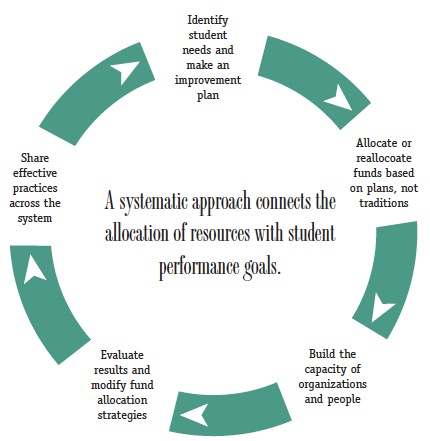Recommendations
What is a “systematic approach”?
A systematic approach starts with an overall framework and includes training and ongoing help so that many more people in the system can- use student data for planning,
- focus spending on identified needs and priorities,
- develop leadership and decision-making structures that support goals,
- evaluate improvement efforts credibly, and
- communicate effectively with peers about what works.
Looking across the various aspects of our study, we rarely saw fiscal and other resource allocation as an integral part of the school and system reform processes. Much is written about the alignment of goals, priorities, and activities, but marshaling the resources of a wide range of decision makers requires a common understanding of how to proceed.
Thus our overall recommendation is that state and local policymakers work toward a more systematic approach, a common frame of reference that provides help to rethink how resources will be allocated. We believe all actors in the education system—from legislators and state education agency staff to district and school leaders, teachers, and parents—have a new role to play and much to gain by implementing such an approach.

Next Page: States and districts can develop a more systematic approach

